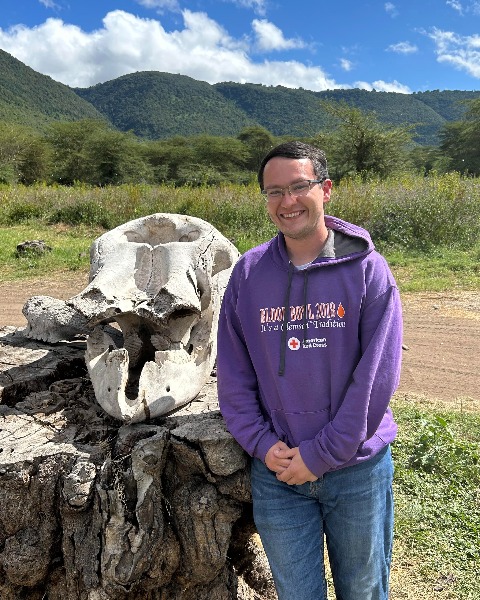Device Technologies and Biomedical Robotics
(K-408) SimBreath: Open-Source Robotic Breathing Simulator for Non-patient Use
- DN
Diego R. Nigoa, BS (he/him/his)
Graduate Research Assistant
Clemson University
Central, South Carolina, United States - AJ
Allison Jacob
Student
Clemson University, United States 
Jeremiah W. Carpenter (he/him/his)
Graduate Research Assistant
Clemson University
Central, South Carolina, United States- EH
Emma Harrington
Student
Clemson University, United States - DD
Delphine Dean, PhD (she/her/hers)
Professor and Chair
Department of Bioengineering, Clemson University, United States
Presenting Author(s)
Co-Author(s)
Primary Investigator(s)
Around the world, respiratory intervention researchers and engineers are faced daily with a problem that currently has no satisfactory solution: how can we test the longevity of an intervention device or consumables for those devices? For the most part, continuous flow solutions such as run-of-the-mill air pumps serve as close approximations, though this ignores the cyclic nature of breathing. When a device needs to look at both inhaling and exhaling, the norm is to use an assistive breathing machine that would usually augment a patient's breathing. Depending on the machine used, this may not reach the full forces and rates typical to human breathing. On top of that, the cost of such a medical device is often unwarranted for a late-stage validation and verification stage. As such, one-off fabricated devices are used to test durability and function of products by simulating cyclic breathing. In an effort to standardize said breathing simulators, this team is designing and (more importantly) documenting the process for fabricating one such device. The ultimate goal is to release the instructions as open source so that any other institution, public or private, can take the design files, purchase the components, and 3D print the fabricated parts to make a breathing simulator for product and project testing.
Materials and Methods::
The two biggest parts of the device design were chosen for their general availability and generic qualities. For the main chamber, a large 6-inch diameter PVC/ABS pipe meant for domestic sewage lines was chosen and purchased from a big-box hardware store. The motor used is medium-sized NEMA-compatible stepper motor was purchased from Amazon, though any NEMA-compatible stepper motor can be substituted. This ensures that any institution with access to a hardware store and standard stepper motors and drivers can use this design with few modifications.
The typical male total lung capacity is approximately 6.5L1, the team calculated that the pipe should be cut down from its original 2 foot length to approximately 14 inches in length. Further, it is known that the average tidal volume (the volume expelled during automatic breathing) is approximately 20% of the total lung capacity1, so we can calculate that about 1.3L of volume are expelled at each cycle. A piston was laser cut out of acrylic in multiple layers, with slight differences in diameter to create groves to place large o-rings in. This creates a seal between the cylinder and the piston, which is then actuated by a series of 3D printed parts and the motor. This design mimics the piston of a steam locomotive but with the motor turning and driving the motion of the piston.
Results, Conclusions, and Discussions::
Early results show promise in the feasibility of making an easily-replicated design using entirely hobbyist-level fabrication techniques and easily accessible parts. In terms of fabrication of the team’s own design, this is in mid to late stages, though a lot of work is still needed for software development. Next steps are refinement modifications to the design, including a complete redesign of the arm connecting the piston to the motor, as the current design has a square cross section which has proven difficult to work with in terms of securing it at a pivot point. This is why figure 1 shows no pivot point and is instead free floating, as none of the attempts at pivot point design were successful. Further steps also include creating tools that will calculate the required length of cylinder if using a different diameter pipe (for both metric and imperial units) and modify the Arduino code to match the new speeds required. In order to better imitate biological function, the whole device could be enclosed in a heated chamber with augmented moisture, as breath is warmer and more humid than plain air.
The inciting event for this project came from needing an inexpensive breathing simulator for testing a different project in this lab, and the team has made considerable progress in that regard. However, a lot of work is still needed to document the design and provide tools which can easily modify the design for the available materials.
Acknowledgements (Optional): : The team would like to acknowledge considereable guidance from additional faculty mentors Dr. Melinda Harman and Dr. John DesJardins. Funding was provided by the Clemson Creative Inquiry Program.
References (Optional): : 1. N Clayton, Review Series: Lung function made easy: Assessing lung size. Chronic Respiratory Disease (2007, 4:3) 151-157. doi:10.1177/1479972307081647
